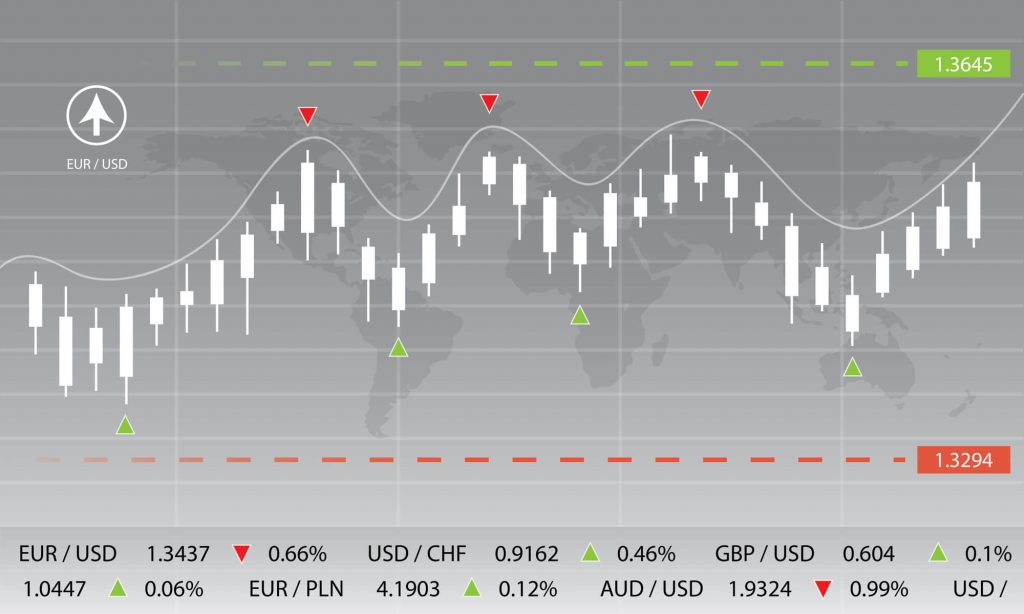
The securities market is a dense place with countless options for investing, but the everyday unit of the market is the individual stock share. It’s the basic element upon which the stock market was built. Buying individual stocks is still how most investors — especially those just getting into investing — interact with the securities market.
What does buying single stocks mean? How do investors profit from the act of buying individual stocks? And how can investors use individual stock shares to build their portfolio value? This article explains the practice and purpose of buying single stocks.

Investing in Individual Stocks
What is a Stock?
When you buy a share of stock in an individual company, you become a part owner of that company. You’re actually making a financial investment through which you can be rewarded if the company thrives. This reward is manifested as a gain in your stock share value.
The premise behind buying individual stocks in a company is that investors believe that the business has a good chance of increasing its value over a certain amount of time, long enough for you to recognize at least a little profit.
Companies sell shares in stock because it’s a direct way to generate operating capital. A business needs funds to conduct normal operations: Obtaining office space, buying raw materials, building manufacturing equipment, hiring staff, researching or developing new products, developing software, and so forth.
Along with receiving cash from angel investors, borrowing money from banks, and using their own cash reserves, selling stock shares provides a public company with the infusion of cash they need to keep running.
Value vs. Growth Stocks
Financial experts have several ways in which they classify and evaluate stocks and build solid investment strategies. One of the most common categorizations is through the separation of value and growth stocks.
You may choose to invest in a relatively safe, dependable company that’s been around for years, dominates its field, generates consistent and solid returns, and has survived and recovered from occasional downturns in the market. When you leave your investment alone with this kind of company, you can expect solid gains over the long term. Stocks from these companies are called value stocks.
Alternately, you may invest in a smaller, up-and-coming company that you believe stands to disrupt the market and experience sharp value gains shortly. These types of speculative investments are riskier, but the opportunity for quick gains is attractive to more active investors. Stocks from these smaller businesses are called growth stocks.
Every company, at some point in its existence, has been a growth stock. Each business begins as an unproven commodity and a risky investment. In the 1990s, Amazon.com was a growth stock. They were a brand-new business model that early investors took a chance on. In a few short years, Amazon overtook the market, and now, they’re one of the most recognizable brands in the world.
In 1997, investors bought Amazon stock at $18 a share; in the opening days of 2021, a single Amazon share was worth over $3,000. It’s now a value stock.
Growth stocks are associated with active investment portfolios because traders try to time their buying and selling to times where they’ll see quick profits. Value stocks are associated with more passive investors who want to see dependable returns with less risk. Your investment style and strategy have a lot to do with how you mix growth and value stocks in your portfolio.
Market Caps
Another way individual stocks are organized on the market is by their overall worth. This statistic is called “market capitalization” or “market cap” for short. Market cap is derived by multiplying the current share price with the number of shares the company has available for purchase.
Most online brokerages and stock listings already identify the market caps of the individual stocks they sell, so you don’t have to do the calculations by yourself.
Tiers of market cap are designated in the following way:
- Large Cap: Companies worth $10 billion or more
- Medium or Mid-Cap: Companies worth between $2 billion and $10 billion
- Small Cap: Companies worth between $300 million and $2 billion
- Micro Cap: Companies worth at least $50 million, but less than $300 million.
There are solid growth opportunities in all tiers. Market cap is a reliable indicator of a company’s value, but a large-cap company doesn’t necessarily make a better investment than a promising smaller cap. Plenty of other factors about the company need to be considered in conjunction with market cap to make strong investment decisions.
Stock Business Sectors
An individual stock is also classified by what business the company is in. There are 11 different business sectors, which include:
- Communications Services: Media, communication, or entertainment services
- Consumer Discretionary: Products customers buy infrequently, like cars, restaurants, jewelry, hotel stays, and more
- Consumer Staples: Makers or sellers of items people buy regularly, such as groceries
- Energy: Producers or providers of energy sources, including fossil fuels and alternative power
- Financials: Banks, online payment services, credit companies, stock brokerages, and other providers of financial services
- Healthcare: Medical equipment makers, pharmaceutical companies, and medical organizations
- Industrials: Heavy-grade goods like airplanes, transportation services, infrastructure, and other large items
- Information Technology: Computer software, hardware, smartphones, semiconductors, and other tech services and products
- Materials: Mining operations, logging works, chemical companies, and other businesses that turn raw materials into useable products
- Real Estate: Realtors, property management companies, real estate websites, storage facilities, and so forth
- Utilities: Providers of gas, water, and electricity, and other daily elements of household living
When choosing stocks, it can be helpful to diversify your portfolio amongst several different categories.

How Individual Share Prices Are Set
Stock shares are priced according to a few factors. Supply and demand, the concept on which free enterprise was founded, is one way the market dictates price. Investors seek companies that are thriving and successful; when they are, more investors demand the stock, so the price goes up. When investors are shedding their shares in a certain company, the stock price goes down.
Technical and fundamental analyses are evaluations of how well a company is positioned to compete in the marketplace; they can also inform stock prices. Overall market health, business sector analyses, and financial events also play a part.
How the Process Works
If you have an online brokerage account with sufficient funds, buying single stocks is a very easy process.
After determining what stock you want to buy, you’ll order the number of shares you want. Your online broker will give you two options for buying shares:
- Market Order: Buy a stock share at whatever price it’s currently selling for
- Limit Order: Name the price at which you want to buy a stock share; if and when it reaches that price, the transaction will be automatically completed
Online brokerages also prompt you to decide whether to execute a market order as soon as possible, when the stock market opens, or is about to close. Once you decide, the transaction will be in effect.
Diversification
If you decide to invest in individual stocks, it’s good to do so with an eye toward diversifying your portfolio. This simply means investing in a mix of several different companies: Large, medium, and small caps, several different business sectors, growth and value stocks, and so forth.
Having a diverse portfolio is a tactic for limiting your risk and hedging against market drops. If you were to put all your investment capital into one company, you’re tying all your fortunes into a single entity and depend on only its success. If its market price drops, your entire investment drops. Owning multiple stocks, however, means you compensate for some of your holdings losing value with more successful stocks.
You’ll also want to spread your stock holdings across different business sectors to hedge against downturns in entire industries. If you hold nothing but real estate stocks, you’re entirely dependent on the health of one business sector. If the real estate market suffers through a recession as it did in 2008, chances are that your entire portfolio will decline in value. But if you also have holdings in other sectors that are thriving or holding their own — consumer, utilities, industrials, tech, or any of the others — your portfolio wouldn’t feel as much impact.
Other Stock Purchase Possibilities
One way to instantly diversify your portfolio is to invest in two mechanisms that offer shares in multiple stocks in single portfolio packages.
Mutual Funds
Mutual funds are investor pools administered by professional money managers. A mutual fund, essentially, is a portfolio. When you buy a share in a mutual fund, your investment goes to several different companies.
For example, if you buy a share in the Vanguard Health Care Index mutual fund, you gain positions in multiple companies at once: Johnson & Johnson, Pfizer, Merck & Co., Thermo Fisher Scientific, and 88 others.
When you order a share of a mutual fund, your trade is completed after the New York Stock Exchange closes at 4 pm Eastern every weekday. Mutual funds are tightly managed, which can result in modest expense charges from time to time.
Exchange-Traded Funds (ETFs)
ETFs are similar to mutual funds, but you trade them as individual stocks; you don’t have to wait until the market closes. ETFs also focus on specific kinds of businesses and sectors. You can buy into an ETF that focuses only on disruptive tech, emerging markets, medium-cap companies, healthcare organizations, the top 50 biotech stocks, or virtually any other financial subcategory. Since they’re more passively run, operating expenses for ETFs are generally lower than they might be for mutual funds.
Mutual funds and ETFs generally offer solid returns on investments across the long haul. Some brand-new investors choose to pick up ownership in a few funds to diversify their holdings all at once. They can also provide an anchor to your portfolio, so you can invest in some slightly riskier individual stocks with a certain measure of financial security.

Investing in Individual Stocks: Use the Gorilla Trades System
Gorilla Trades focuses on individual stocks. Our stock-picking system is driven by a thorough, realistic analysis of promising and profitable companies that can boost your portfolio’s value in a hurry. Contact us today to start a free trial.
